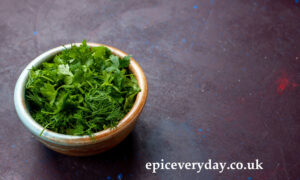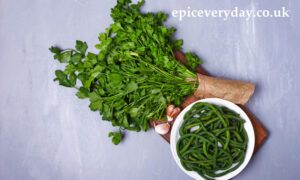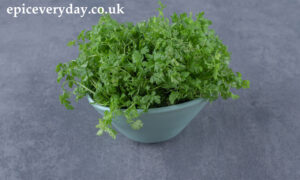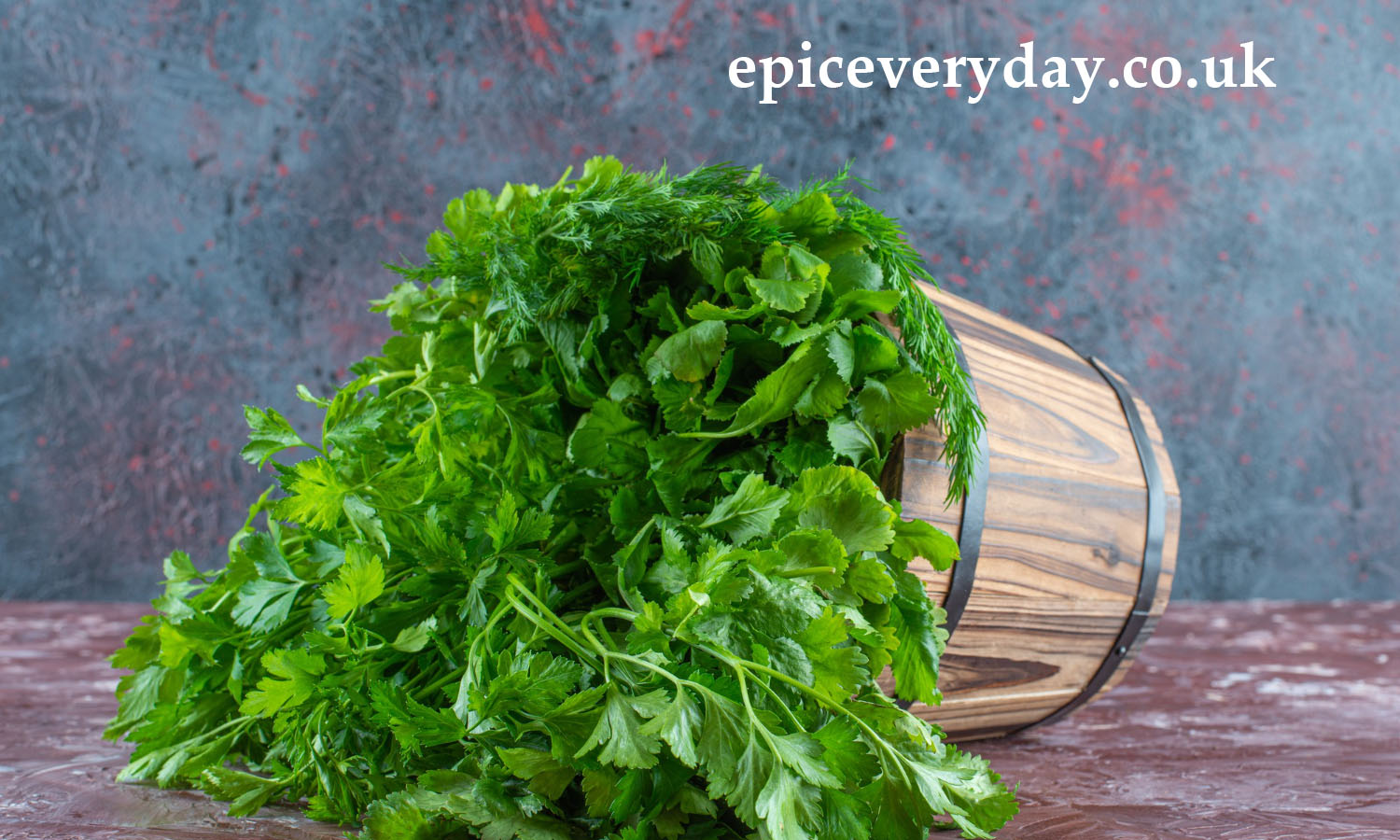The Magic of Koriandri: A Complete Guide to Flavor, Health & Culinary Uses
In kitchens across the world, one aromatic ingredient stands out for its unique flavor and versatility — koriandri. Whether fresh or dried, this humble herb has captured the imagination of chefs, home cooks, and health enthusiasts alike. In this article, we will explore what koriandri is, its origin, flavor profile, how to use it in cooking, health benefits, cultivation tips, and much more. We’ll also address common questions in a “Frequently Asked Questions (FAQs)” section before concluding.
By covering both scientific insights and practical tips, this guide aims to help you incorporate koriandri more confidently into your life.
What Is Koriandri?
Koriandri is simply another name for the plant Coriandrum sativum, commonly known as coriander or cilantro.
All parts of the koriandri plant — leaves, stems, roots, and seeds — are edible and used in different ways depending on culinary traditions.
-
The fresh leaves and stems (often called “cilantro” in some regions) have a bright, citrusy, slightly pungent flavor.
-
The seeds (dried) are used as a spice with warm, nutty, slightly sweet undertones.
The word “koriandri” appears in various regional languages and writings to reference this plant, reflecting its widespread culinary and cultural relevance.
History and Origin

Koriandri has a remarkably long history. Evidence of its use dates back to ancient civilizations:
-
In archaeological digs, coriander seeds have been found in tombs and ancient sites, including those of early Neolithic cultures.
-
Ancient Egyptians, Greeks, and Romans used the herb both for food and for medicinal purposes.
-
Over time, trade and migration spread koriandri across continents, making it a staple in cuisines from South Asia to Europe, Latin America, and beyond.
As it traveled, local cultures adapted koriandri to their tastes, developing unique recipes, uses, and names. The shared but regionally distinct names (coriander, cilantro, dhania, koriandri, etc.) reflect this broad diffusion.
Flavor Profile of Koriandri
One fascinating thing about koriandri is how differently people perceive its flavor:
-
Many describe the leaves as fresh, citrusy, bright, or slightly peppery.
-
However, some people say the taste is soapy or unpleasant. Genetic research has shown that a variant near the olfactory receptor gene OR6A2 may make some individuals more sensitive to aldehydes present in the herb, which can trigger that soapy perception.
-
The seeds, in contrast, are generally more universally appreciated: they carry warm, fragrant, slightly citrusy and nutty notes.
Because of the sensitivity differences, the same koriandri leaf can taste amazing to one person and off-putting to another.
Culinary Uses of Koriandri
Koriandri is a superstar herb/spice because of its flexibility. Here’s how to use it in your cooking:
Using the Leaves (Fresh)
-
Garnish & finishing touch: Chop fresh koriandri leaves and sprinkle over soups, stews, curries, salads, grilled meats, or rice dishes just before serving. This preserves their fragrance and brightens flavors.
-
Chutneys, salsas & dips: Puree or chop leaves to make green chutneys, salsa verde, cilantro-lime sauces, and herb dips.
-
Salads & raita: Combine with yogurt, cucumber, tomato, onion to create cooling raita or fresh herb salads.
-
Marinades & dressings: Blend fresh koriandri with oil, citrus, garlic, chilies, and seasonings to make vibrant dressings or marinades.
Using the Seeds (Dried / Ground)

-
Spice blends & masalas: Toast and grind koriandri seeds to include in garam masala, curry powders, and other spice mixes.
-
Soups, stews, curries: Whole or ground seeds infuse warmth into slow-cooked dishes.
-
Pickling & preserving: Seeds are often used in pickles, chutneys, and brines.
-
Breads & baking: Some cultures add seeds to breads, crackers, or savory baked goods for earthy flavor.
-
Roasted or toasted whole seeds: Enhance aroma by lightly dry-roasting before adding to dishes.
Roots and Stems
In some Asian cuisines (especially Thai), koriandri roots are used — crushed or blended into curry pastes for a deeper, earthier flavor.
Health Benefits of Koriandri
Koriandri is not just about flavor — it also offers several health-promoting properties, though always as part of a balanced diet, not a substitute for medical care.
Nutritional Profile
-
Fresh leaves are mostly water (~92%), with small amounts of carbohydrates, protein, fibers, and negligible fat.
-
They provide vitamins such as vitamin A, vitamin C, and vitamin K. Minerals like iron, magnesium, manganese and trace elements are present in seeds and leaves.
Potential Health Effects
-
Antioxidant activity
The essential oils and polyphenols in koriandri may help neutralize free radicals, reducing oxidative stress. -
Digestive support
In many traditional systems, koriandri is believed to soothe digestion, relieve gas, and stimulate appetite.
Some compounds also show antimicrobial effects against certain bacteria. -
Cholesterol & lipid metabolism
Preliminary studies suggest that seed extracts of coriander may help modulate cholesterol and lipid profiles. However, human clinical evidence is still limited. -
Anti-microbial potential
Essential oils from coriander seeds and leaves have shown activity against Gram-positive and Gram-negative bacteria in lab studies. -
Anti-inflammatory effects
Some compounds in koriandri may help reduce mild inflammation, though more clinical trials are needed.
Caveats & Considerations

-
Some people may have allergic reactions to coriander (koriandri), especially if sensitive to other members of the Apiaceae family (like celery, fennel).
-
Taste perceptions vary owing to genetic differences — some find the flavor soapy or unpleasant.
-
As with any herb or supplement, koriandri should not replace medical advice or treatment in serious conditions.
How to Grow Koriandri at Home
Growing your own fresh koriandri ensures you always have aromatic leaves on hand. Here’s a simple guide:
Soil & Location
-
Prefers well-draining, loamy soil enriched with organic matter.
-
It thrives in full sun or partial shade (especially in very hot climates).
-
Cooler climates with mild summers are ideal, as extreme heat can cause premature flowering (bolting).
Planting
-
You can sow seeds directly into garden beds or in containers/pots.
-
Sow 1–2 cm deep, spaced about 5–10 cm apart.
-
Keep soil consistently moist but not soggy.
Watering & Care
-
Moderate watering — avoid waterlogging.
-
Remove weeds that compete for nutrients.
-
Provide light fertilizer (balanced N-P-K) if soil is poor.
Harvesting
-
You can begin harvesting leaves when plants reach around 10 cm height.
-
Regular pruning or cutting above a set of leaves encourages more growth.
-
For seeds, allow the plant to flower and then dry out before collecting the seed heads.
Tips
-
Succession planting: Sow seeds every few weeks to have constant fresh supply.
-
Shade in heat: In very hot summers, afternoon shade can prevent bolting.
-
Use containers: Koriandri grows well in pots on balconies or window sills.
Tips for Storing & Using Koriandri
-
Fresh leaves: Use quickly. To store, wrap in damp paper towel and place in a plastic bag in fridge — use within a few days.
-
Freezing: Blend leaves with a little water or oil, freeze in ice cube trays, then store cubes to use in cooking.
-
Drying seeds: Air-dry seed heads or use a low heat oven, then store in airtight containers away from light and heat.
-
Grinding: Grind seeds only when needed to preserve aromatic oils.
Common Mistakes & Troubleshooting
-
Bolting too soon: Caused by heat, inconsistent watering, or too much sunlight. Use shade or grow during cooler seasons.
-
Lack of flavor: Using old, dried leaves or ground seeds lost aroma — freshness matters.
-
Pest issues: Aphids or fungal disease can affect leaves — inspect plants and use organic controls if needed.
-
Flavor mismatch: If koriandri tastes “off” to you, test a small amount first — your genetic sensitivity may affect perception.
Conclusion
Koriandri is more than just a herb or spice — it’s a time-tested treasure with deep culinary, cultural, and health significance. From ancient tombs to modern kitchens, koriandri continues to bridge cultures and flavor traditions.
Frequently Asked Questions (FAQs)
Q1: Is “koriandri” the same as coriander or cilantro?
Yes — koriandri is an alternative name for the plant Coriandrum sativum. The term coriander often refers to the seeds, while cilantro refers to the fresh leaves in some regions.
Q2: Why does koriandri taste like soap to some people?
Some people carry a version of the OR6A2 gene, which makes them more sensitive to aldehyde compounds in koriandri, giving it a soapy or pungent flavor.
Q3: Can I use both leaves and seeds in cooking?
Absolutely. Leaves are used fresh for bright flavor; seeds are dried and ground to provide warmth and depth. They complement rather than replace each other.
Q4: What health benefits does koriandri offer?
Koriandri contains antioxidants, vitamins (A, C, K), minerals, and has antimicrobial and digestive-supporting properties. Some preliminary studies also suggest cholesterol-modulating effects.
Q5: How do I grow koriandri effectively at home?
Use well-draining soil, plant in sun or partial shade, provide regular water, harvest leaves early, and avoid heat stress to prevent bolting. Succession sowing helps maintain supply.
Q6: How should I store koriandri so it stays fresh?
Store fresh leaves wrapped in damp paper towel in the fridge for a few days, or freeze them in herb cubes. Keep dried seeds in airtight containers away from light and heat.
Also Read : Unlocking the Power of Zryly.com Internet: Your Complete Guide to Secure Connectivity, Hosting & more














Post Comment